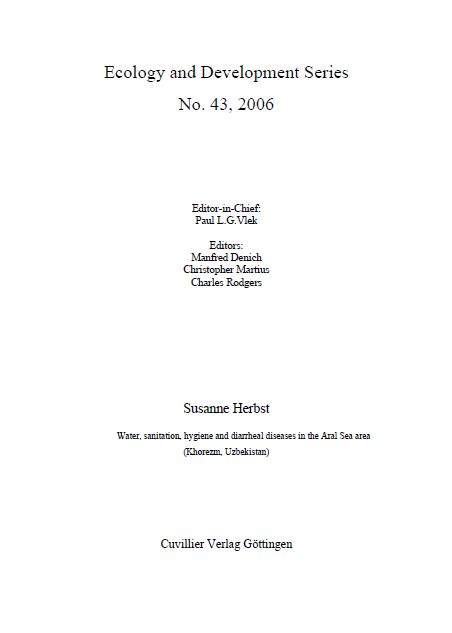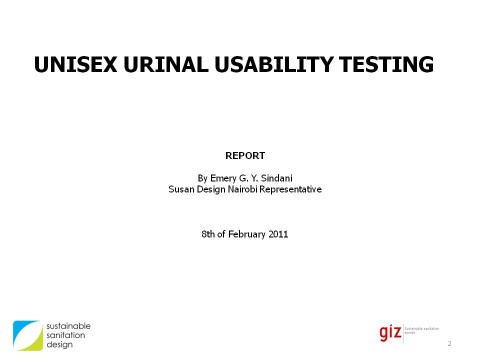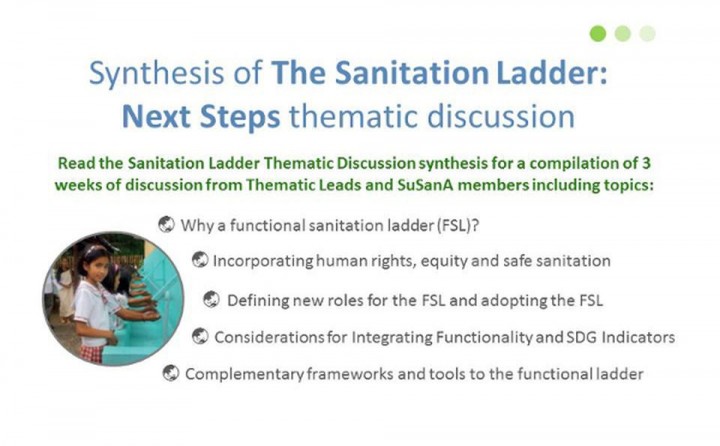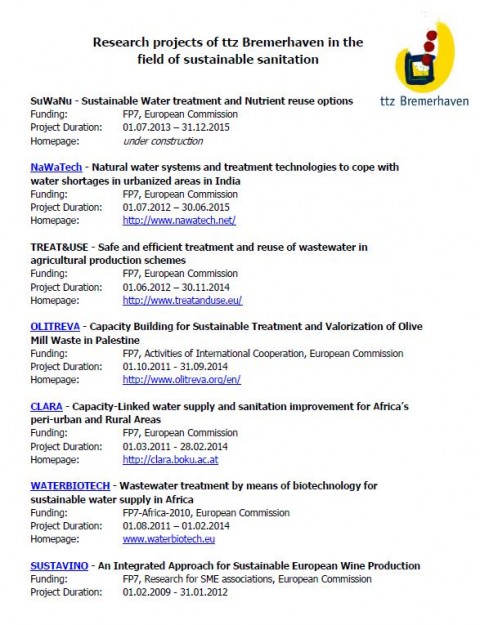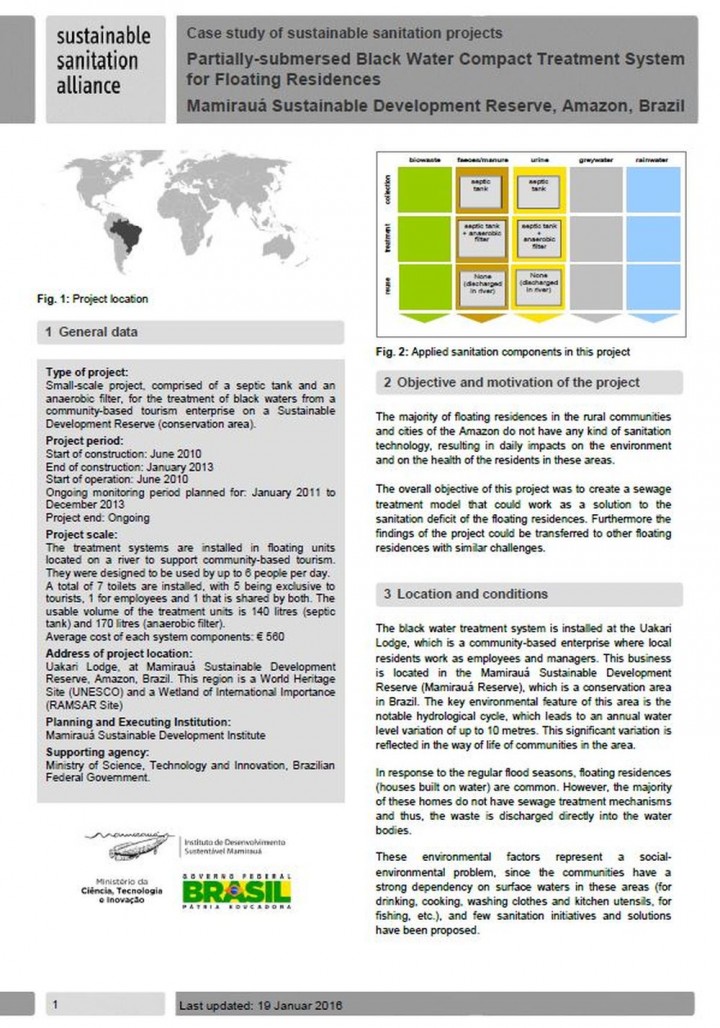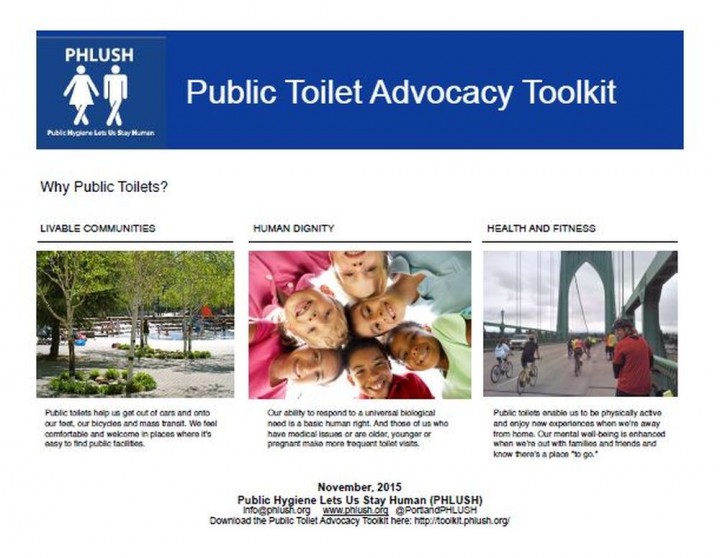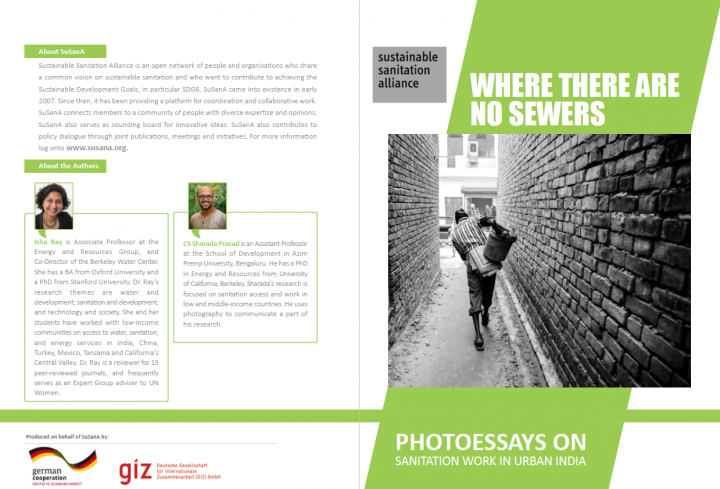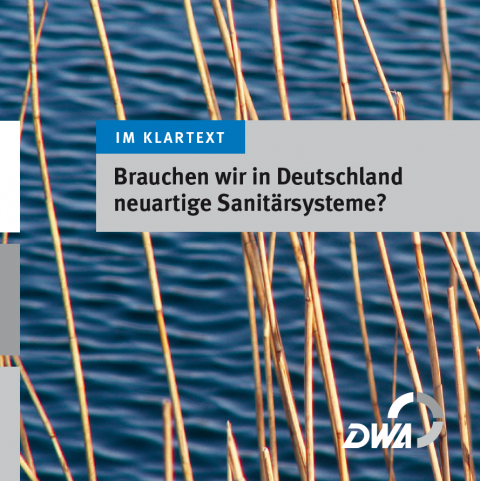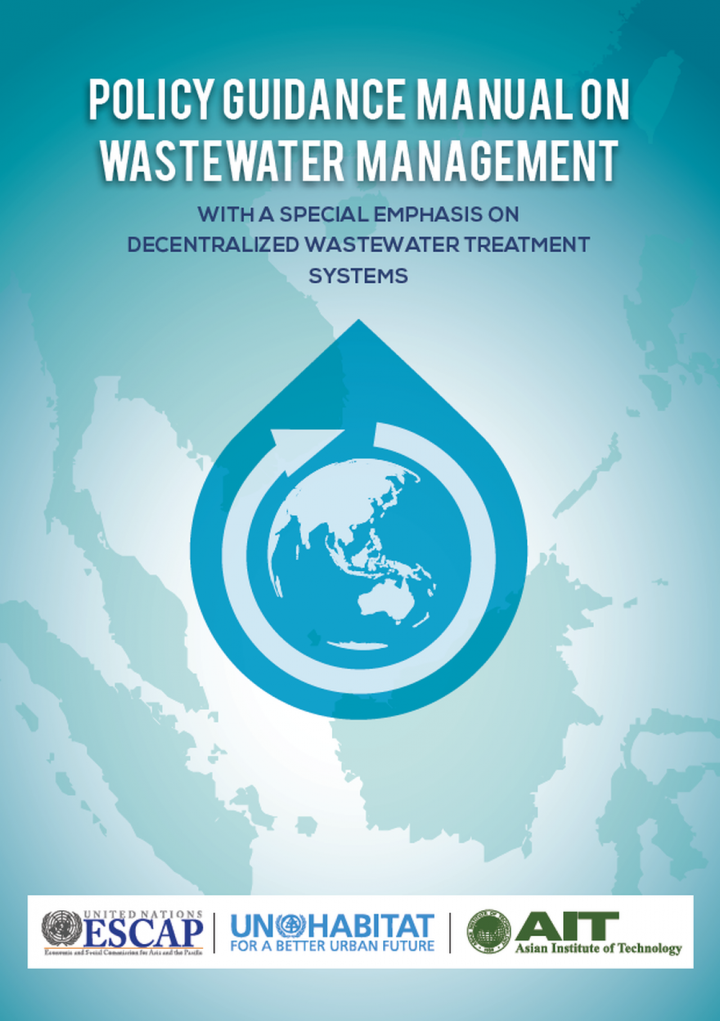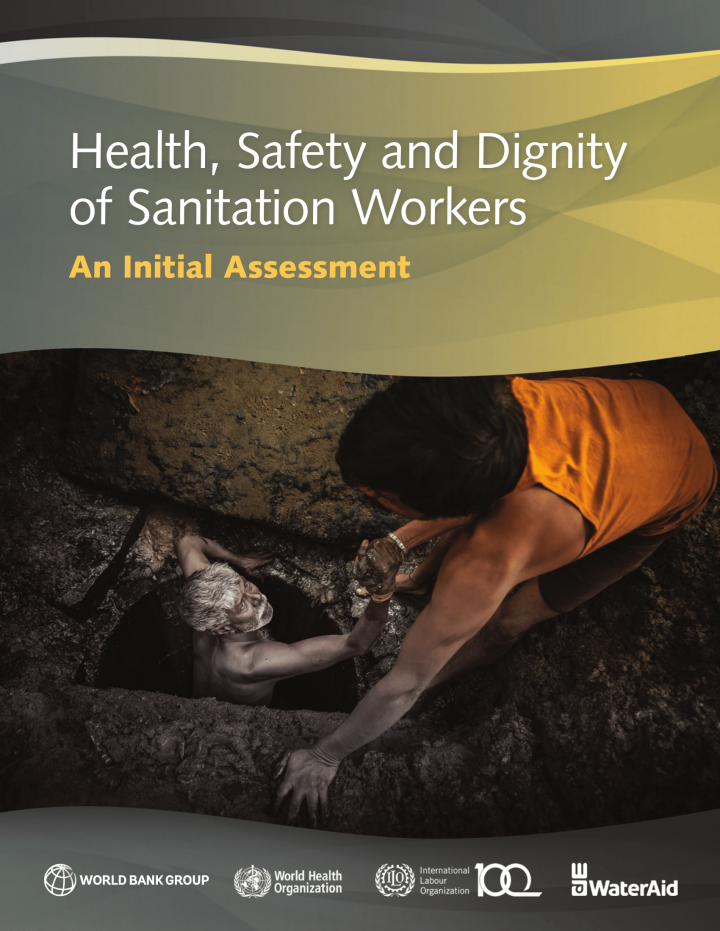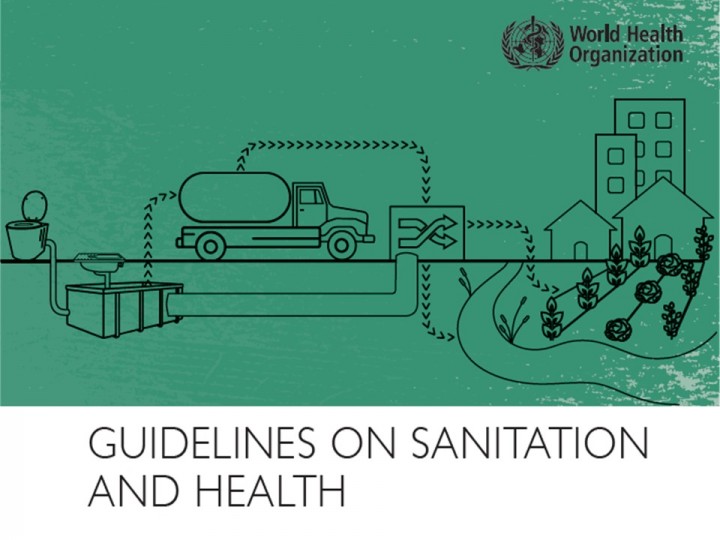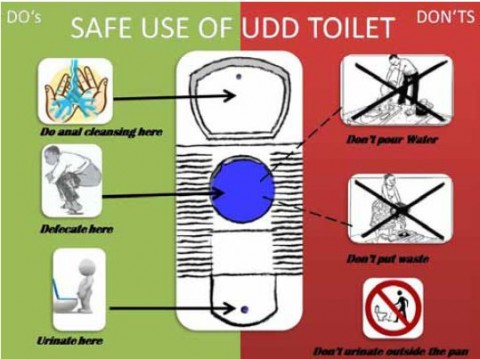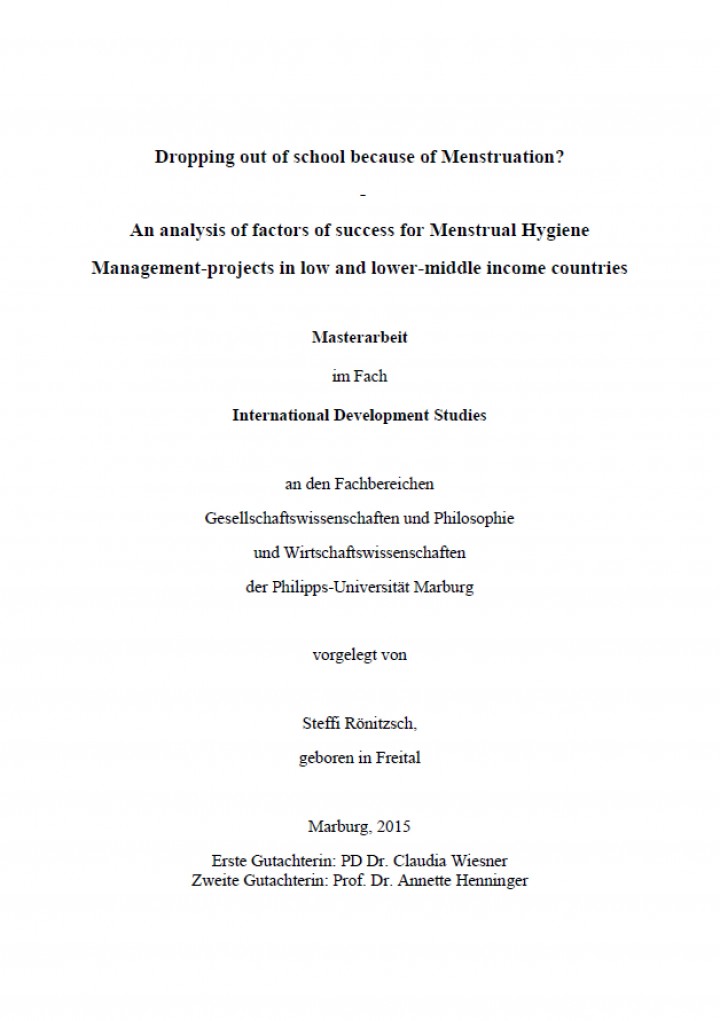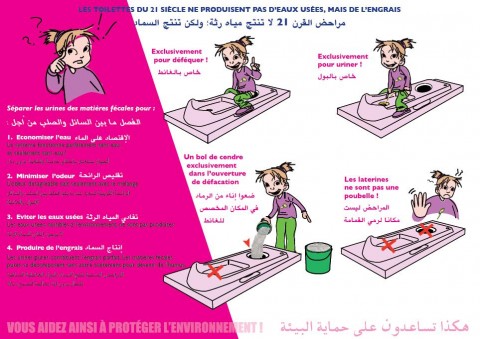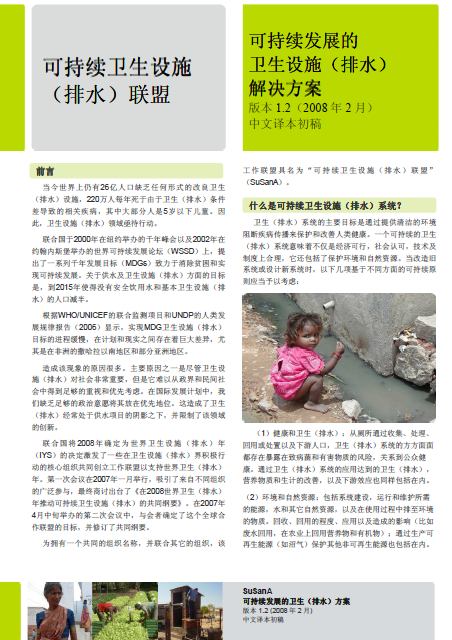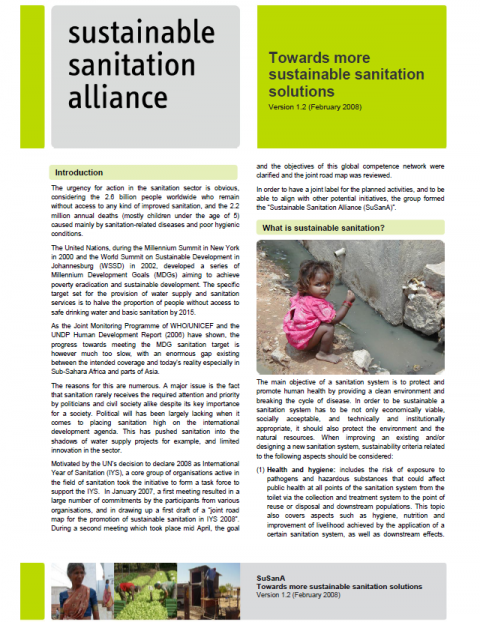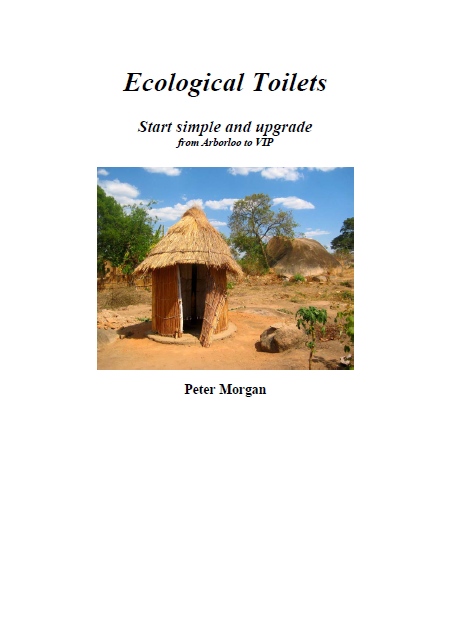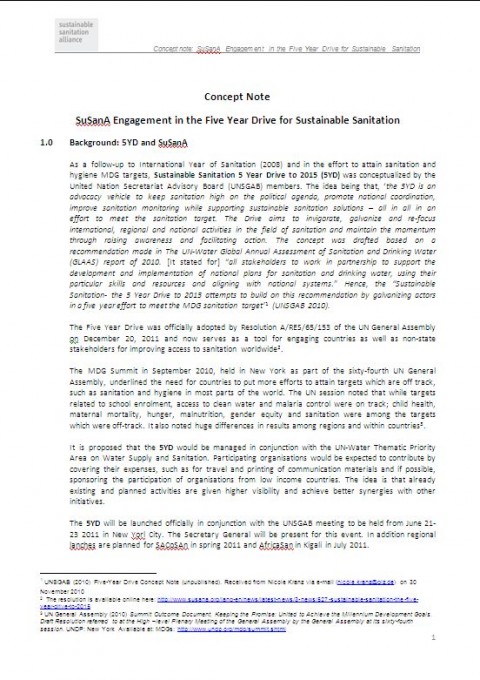Searching for information on Sanitation Workers?
The Sanitation Workers Knowledge + Learning Hub is the best source for all current news, trends, articles and updates on sanitation workers rights around the world.
The synthesis of the thematic discussion series "The Sanitation Ladder: Next Steps" provides a summary and the key points of the first thematic discussion series on the SuSanA Discussion Forum.
The thematic discussion addressed the role of the functional sanitation ladder in the WASH-related post-2015 landscape, where discussions and negotiations are currently taking place to determine the …
The majority of floating residences in the rural communities and cities of the Amazon do not have any kind of sanitation technology, resulting in daily impacts on the Environment and on the health of the residents in these areas.
The overall objective of this project was to create a sewage treatment model that could work as a solution to the sanitation deficit of the floating residences. …
The purpose of the Public Toilet Advocacy Toolkit is to strengthen the capacity of citizen advocates and City officials to provide and maintain great public toilets that make communities livable, respect human dignity and promote health and well-being. PHLUSH regularly responds to requests from communities throughout North America seeking to increase toilet availability. These seventeen tools are …
November 19 is World Toilet Day. Enormous progress has been made in the global effort to provide safe and affordable toilets for the world’s poorest citizens since World Toilet Day was first declared in 2001. Significant strides have been made in “reinventing” toilet designs for low-income, water-short, unsewered urban zones; celebrites such as Bill Gates and Matt Damon have brought this …
The Policy Guidance Manual on Wastewater Management with a special emphasis on Decentralised Wastewater Treatment Systems (DEWATS) highlights adequate policy and sustainable practices from the South-East Asia (SEA) region and worldwide. The primary objectives of the Policy Guidance Manual on DEWATS for SEA are three-fold:
(a) to guide national and local policy-makers and experts of SEA in …
The global sanitation workforce bridges the gap between sanitation infrastructure and the provision of sanitation services. Sanitation workers provide an essential public service but often at the cost of their dignity, safety, health, and living conditions. They are some of the most vulnerable workers. They are far too often invisible, unquantified, and ostracized, and many of the challenges they …
Safe sanitation is essential for health, from preventing infection to improving and maintaining mental and social well-being. The lack of safe sanitation contributes to diarrhoea, a major public health concern and a leading cause of disease and death among children under five years in low- and middle- income countries; poor sanitation also contributes to several neglected tropical diseases, as …
The 2017 edition of the United Nations World Water Development Report (WWDR) explores the issue of wastewater and its potential as a sustainable resource. However, the findings show how much work has to be done: “Worldwide, the vast majority of wastewater is neither collected nor treated. Furthermore, wastewater collection per se is not synonymous with wastewater treatment. In many cases, …

